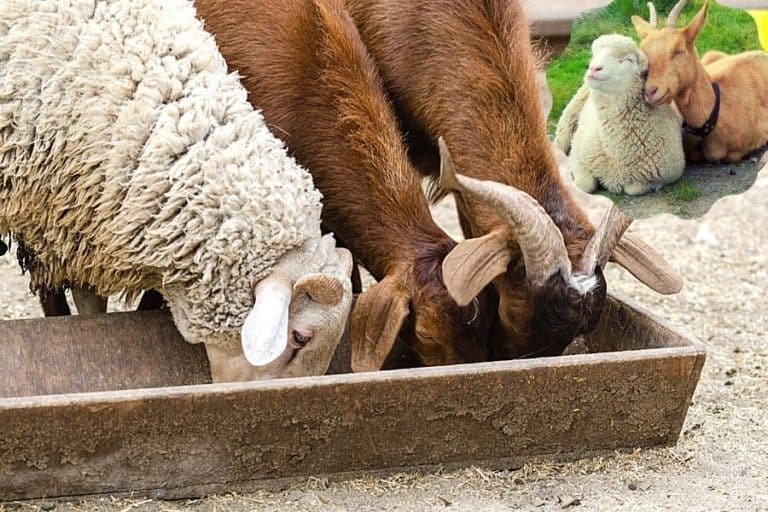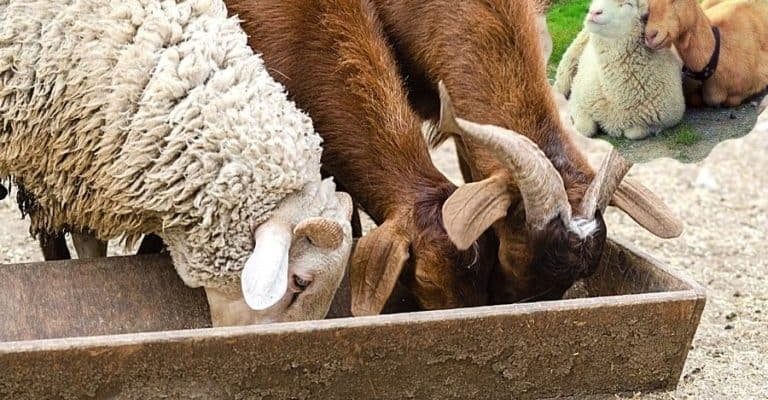
Sheep and goats, for example, have some similarities. They’re both herbivores and can graze together, which seems like a match made in farming heaven. However, they also have distinct differences that can impact their compatibility. Let’s dive into the dynamics of sheep, goats, and other livestock to help you figure out if they can coexist peacefully on your farm or homestead.
Understanding the Basics of Sheep and Goats
To start, let’s break down some fundamental traits of both sheep and goats. Both animals belong to the Bovidae family, but they have different needs and behaviors. Sheep are more flock-oriented. They thrive on social interaction and prefer to stick together in a group. Goats, on the other hand, exhibit a curious and independent streak. They’re natural explorers, often eager to check out new areas or even escape their enclosures.
This difference can lead to some challenges when it comes to housing them together. For instance, while sheep are content to stay put, goats might want to venture off into areas that could be problematic for both species. If you have space for them to roam safely, that’s a bonus, but if not, you’ll need to think carefully about how to set up your living arrangements.
Co-habilitation Benefits: Why They Can Work Together
So, can sheep live with goats? The short answer is yes, but let’s dig a little deeper into the benefits of this mixed arrangement. For one, having both sheep and goats can provide a more diverse grazing experience. They often nibble on different types of plants, which can help manage pasture health more effectively. This means a more vibrant ecosystem on your property.
Additionally, keeping these two livestock types together can lead to less boredom. Goats can sometimes act a bit silly, and their playful nature can entertain the more serious sheep. Plus, there’s a comfort in their company. When both species are around, they may feel safer from predators because they have more eyes—and ears—watching out for danger.
Potential Challenges of Mixing Livestock
Despite the potential benefits, combining sheep with goats isn’t without its challenges. You might be wondering about health and safety issues. For example, goats might carry diseases that could be harmful to sheep, such as *caseous lymphadenitis*, also known as CL. It’s essential to maintain proper health and vaccination protocols to keep everyone safe in a mixed environment.
Moreover, their feeding habits differ. Goats are selective browsers, meaning they prefer to munch on shrubs and bushes, while sheep are grazers that stick to grass and hay. This difference can lead to competition for food, so you’ll need to ensure each animal has access to their preferred diet. Feeding them separately can sometimes help prevent disputes during mealtimes.
Housing Needs for Mixed Species
Creating an ideal living space is crucial when raising sheep and goats together. They have different needs regarding shelter. Sheep typically prefer a dry, warm environment since they can be prone to diseases like pneumonia if they get too cold and wet. Goats, conversely, love to climb and need more vertical space in their housing to accommodate their playful nature.
Ensure that your barn or shelter provides separate spaces if needed. This can minimize stress and allow each species to express their natural behaviors. For instance, a goat might enjoy climbing on hay bales or even furniture, while a sheep would likely prefer a cozy corner to settle down and rest.
Other Livestock Options: What Works Well With Sheep?
If you’re considering mixing sheep with other types of livestock, you have a few options. Pigs, for example, can live alongside sheep quite well. They’re both social animals and can share a pasture without too much conflict. Just be aware that pigs can dig, which might disturb the grazing area.
Then, there are chickens. These birds can help control insects and can be a fun addition to your farm. They typically don’t bother sheep and can coexist peacefully, as long as there’s enough space for everyone. However, keep an eye out, as some sheep might see chickens as a moving snack!
Setting Up for Success: Tips for Co-habitation
To create a successful mixed-livestock environment, follow these tips:
- Monitor Health: Regular check-ups and vaccinations can prevent diseases spreading between species.
- Space Matters: Ensure your pasture is large enough to provide ample room for each species to roam and graze without feeling overcrowded.
- Feeding Zones: Consider separate feeding areas to cater to the different dietary preferences of sheep and goats.
- Introduce Gradually: When adding new animals, let them get used to each other slowly to minimize stress.
- Watch for Signs of Stress: Keep an eye on how your animals interact. Aggression or signs of fear could indicate they need more separation.
In conclusion, sheep can indeed live with goats or other livestock, but it requires careful planning and consideration. Think about their unique needs, behaviors, and health concerns to create a balanced and harmonious environment. By being aware of these factors and addressing potential challenges, you can enjoy the benefits of a mixed-species farm without too many headaches.
So, whether you’re a seasoned farmer or a curious beginner, remember that every animal has its own personality and requirements. Embrace the diversity, and you’ll likely find that raising sheep alongside goats and other livestock can be a rewarding experience. Happy farming!

